与vue2相比基础的地方有太多相似之处不再记述
一、组件化开发
1.父传子:
App.vue
<son msg="hello world"></son>
复制代码son.vue
export default {
// props: ['msg']
props: {
msg: {
type: String,
default: "default"
}
}
}
复制代码2.子传父
App.vue
<template>
<h2>计数:{{counter}}</h2>
<son @add="add"></son>
</template>
<script>
methods: {
add() {
this.counter++
}
},
}
</script>
复制代码Son.vue
<template>
<button @click="increment">+1</button>
</template>
<script>
export default {
emits: ['add', 'sub'],
methods: {
increment() {
this.$emit('add')
}
}
}
</script>
复制代码3.provide和inject
用于根组件和子孙组件之间传递数据

App.vue
<template>
<father></father>
<button @click="addName">+name</button>
</template>
<script>
export default {
provide() {
return {
name: 'yogln',
msg: this.msg,
names: computed(() => this.names) //利用computed做响应式
}
},
data() {
return {
msg: 'hello world',
names: ['abc', 'cba', 'nba']
}
},
methods: {
addName() {
this.names.push('why')
}
},
}
</script>
复制代码Son.vue
<script>
export default {
inject: ["name", "msg", "names"]
}
</script>
复制代码4.事件总线
有于vue取消了$on,$off等事件,所以只能依赖第三方库mitt进行非父子组件之间的通信,安装依赖
npm i mitt
复制代码封装mitt.js
import mitt from 'mitt'
export default mitt()
复制代码使用方式:
发送方:
<script>
import emitter from './utils/eventBus'
export default {
methods: {
btnClick() {
console.log('btnclick')
emitter.emit("yogln", "yogln事件")
}
},
}
</script>
复制代码接受方:
<script>
import emitter from './utils/eventBus'
export default {
created() {
emitter.on('yogln', msg => {
console.log(msg)
})
emitter.on('*', (type, msg) => {
console.log(type, msg)
})
},
}
</script>
复制代码5.具名插槽的使用
NavBar.vue
<div class="nav-bar">
<div class="left">
<slot name="left"></slot>
</div>
<div class="center">
<slot name="center"></slot>
</div>
<div class="right">
<slot name="right"></slot>
</div>
</div>
复制代码App.vue
<div>
<nav-bar>
<template v-slot:center>
<button>按钮</button>
</template>
<template #right>
<span>右边</span>
</template>
</nav-bar>
</div>
复制代码注意:v-slot:可以简写成#
动态插槽
我们可以使用v-slot:[dynamicSlotName]方式动态绑定一个名称
<template v-slot=[name]>
···
</template>
复制代码6.作用域插槽的使用
渲染作用域
在Vue中有渲染作用域的概念:
- 父级模板里的所有内容都是在父级作用域中编译的;
- 子模板里的所有内容都是在子作用域中编译的;
案例:

App.vue
<show :names="names">
<template #="slotProps">
<button>{{slotProps.item}}</button>
</template>
</show>
复制代码Show.vue
<template v-for="(item, index) in names" :key="item">
<slot :item="item" :index="index"></slot>
</template>
复制代码作用域插槽与具名插槽的混用
App.vue
<template>
<show :names="names">
<template #yogln="slotProps">
<button>{{slotProps.item}}</button>
</template>
</show>
</template>
复制代码Show.vue
<template>
<template v-for="(item, index) in names" :key="item">
<slot name="yogln" :item="item" :index="index"></slot>
</template>
</template>
复制代码独占默认插槽的缩写
App.vue
<template>
<show :names="names" #="slotProps">
<button>{{slotProps.item}}</button>
</show>
</template>
复制代码注意
如果我们有默认插槽和具名插槽,那么按照完整的template来编写,只要出现多个插槽,请始终为所有的插槽使用完整的基于 <template> 的语法:
7.动态组件
动态组件是使用 component 组件,通过一个特殊的attribute is 来实现 , 注意currentTab时一个组件
<component :is="currentTab"></component>
复制代码动态组件传递参数和传递参数一样
<component :is="currentTab" :age="18"></component>
复制代码注意,这里的age加了 : 表示18的一个Number类型,不加 : 则是字符串类型
8.keep-alive
<keep-alive>
<component :is="currentTab"></component>
</keep-alive>
复制代码keep-alive有一些属性:
- include – string | RegExp | Array。只有名称匹配的组件会被缓存;
- exclude – string | RegExp | Array。任何名称匹配的组件都不 会被缓存;
- max – number | string。最多可以缓存多少组件实例,一旦达 到这个数字,那么缓存组件中最近没有被访问的实例会被销毁;
include 和 exclude prop 允许组件有条件地缓存:
- 二者都可以用逗号分隔字符串、正则表达式或一个数组来表示;
- 匹配首先检查组件自身的 name 选项

9.异步组件的使用
通过Import()函数引用资源会对打包文件进行分包
import("./utils/math.js").then(res => res.sum(20, 30))
import("./utils/math.js").then({sum})
复制代码不使用路由打包进行分包
<script>
import { defineAsyncComponent } from 'vue'
const AsyncAbout = defineAsyncComponent(() => import('./About.vue'))
export default {
components: {
AsyncAbout
}
}
</script>
复制代码另一种写法:
<script>
const AsyncAbout = defineAsyncComponent({
loader: () => import('./About.vue')
// loadingCompoent: Loading // 加载组件的时候显示的loading组件
// errorCompoent: 出错时显示的组件
// delay: 2000 //loadingComponent显示之前的延迟事件
})
</script>
复制代码suspense和异步组件的使用
<suspense>
<template #default>
<async-about></async-about>
</template>
<template #fallback>
<loading></loading>
</template>
</suspense>
复制代码suspense组件当前还处于实验阶段
10.$refs、$parent、$root、$el
<home ref="homeRef"></home>
复制代码通过this进行调用,可以调用组件的data和methods
$parent引用父组件
$root引用根组件
$el引用组件里面的el,this.$refs.homeRef.$el可以获得组件内的所有标签
注意:vue3中已经移除了this.$children
11.组件的生命周期

组件使用了leep-alive时候还会有两个生命周期:activited和deactivited
12.组件的v-model
基本使用
App.vue
<my-input v-model="message"></my-input>
// 实际上所做的事情 <my-input :="message" @update:modelValue="message = $event"></my-input> 和input组件的v-model类似
复制代码MyInput.vue
<template>
<h2>modelValue: {{modelValue}}</h2>
<input :value="modelValue" @input="inputChange">
</template>
<script>
export default {
props: {
modelValue: {
type: String
}
},
emits: ["update:modelValue"],
methods: {
inputChange(event) {
this.$emit("update:modelValue", event.target.value)
}
},
}
</script>
复制代码注意: modelValue是可以修改的,通过v-model:title="title"
通过计算属性绑定input
<input :value="value" @input="inputChange">
复制代码computed: {
value: {
set(value) {
this.$emit("update:modelValue", value)
},
get() {
return this.modelValue
}
}
}
复制代码
通过一个input组件传递不同的参数
App.vue
<template>
<my-input v-model="message" v-model:title="title"></my-input>
<h2>modelValue: {{message}}</h2>
<h2>title: {{title}}</h2>
</template>
<script>
import MyInput from './MyInput2.vue'
export default {
components: {
MyInput
},
data() {
return {
message: 'message',
title: 'title'
}
},
}
</script>
复制代码Myinput.vue
<template>
<input v-model="value">
<input v-model="titleValue">
</template>
<script>
export default {
props: {
modelValue: String,
title: String
},
emits: ["update:modelValue", "update:title"],
computed: {
value: {
set(value) {
this.$emit("update:modelValue", value)
},
get() {
return this.modelValue
}
},
titleValue: {
set(titleValue) {
this.$emit("update:title", titleValue)
},
get() {
return this.title
}
}
}
}
</script>
复制代码
二、动画
1.动画的基本使用
<template>
<div>
<button @click="isShow = !isShow">显示/隐藏</button>
<transition name="yogln">
<h2 v-if="isShow">Hello world</h2>
</transition>
</div>
</template>
<style scoped>
.yogln-enter-from,
.yogln-leave-to {
opacity: 0;·
}
.yogln-enter-to,
.yogln-leave-from {
opacity: 1;
}
.yogln-enter-active,
.yogln-leave-active {
transition: opacity 1s ease;
}
</style>
复制代码
当插入或删除包含在 transition 组件中的元素时,Vue 将会做以下处理:
- 自动嗅探目标元素是否应用了CSS过渡或者动画,如果有,那么在恰当的时机添加/删除 CSS类名;
- 如果 transition 组件提供了JavaScript钩子函数,这些钩子函数将在恰当的时机被调用;
- 如果没有找到JavaScript钩子并且也没有检测到CSS过渡/动画,DOM插入、删除操作将会立即执行;
我们会发现上面提到了很多个class,事实上Vue就是帮助我们在这些class之间来回切换完成的动画:
- v-enter-from:定义进入过渡的开始状态。在元素被插入之前生效,在元素被插入之后的下一帧移除。
- v-enter-active:定义进入过渡生效时的状态。在整个进入过渡的阶段中应用,在元素被插入之前生效,在过渡/动 画完成之后移除。这个类可以被用来定义进入过渡的过程时间,延迟和曲线函数。
- v-enter-to:定义进入过渡的结束状态。在元素被插入之后下一帧生效 (与此同时 v-enter-from 被移除),在过渡/ 动画完成之后移除。
- v-leave-from:定义离开过渡的开始状态。在离开过渡被触发时立刻生效,下一帧被移除。
- v-leave-active:定义离开过渡生效时的状态。在整个离开过渡的阶段中应用,在离开过渡被触发时立刻生效,在 过渡/动画完成之后移除。这个类可以被用来定义离开过渡的过程时间,延迟和曲线函数。
- v-leave-to:离开过渡的结束状态。在离开过渡被触发之后下一帧生效 (与此同时 v-leave-from 被删除),在过渡/ 动画完成之后移除。
class添加的时机和命名规则

class的name命名规则如下:
- 如果我们使用的是一个没有name的transition,那么所有的class是以 v- 作为默认前缀;
- 如果我们添加了一个name属性,比如 ,那么所有的class会以 why- 开头;
2.css过渡animation的基本使用
<template>
<div>
<div class=""><button @click="isShow = !isShow">显示/隐藏</button></div>
<transition name="yogln">
<h2 class="title" v-if="isShow">Hello world</h2>
</transition>
</div>
</template>
<style scoped>
.title {
width: 200px;
margin: 0 auto;
}
.yogln-enter-active {
animation: bounce 1s;
}
.yogln-leave-active {
animation: bounce 1s reverse;
}
@keyframes bounce {
0% {
transform: scale(0);
}
50% {
transform: scale(1.2);
}
100% {
transform: scale(1);
}
}
</style>
复制代码注意:h2标签是一个块级元素,独占一行,如果不修改宽度会出现意料之外的效果
3.过渡和动画一起使用
type属性
过渡animation和动画transform是可以一起使用的,但是如果两者的时间使用不一致也会出现一些问题。例如:
.yogln-enter-active,
.yogln-leave-active {
transition: opacity 2s ease;
}
.yogln-enter-active {
animation: bounce 1s;
}
.yogln-leave-active {
animation: bounce 1s reverse;
}
复制代码这个时候就会出现animation 结束了而transition还没有结束的问题,可以通过指定transition的type属性指定按照哪个属性的执行时间为准
<transition name="yogln" type="animation">
<h2 class="title" v-if="isShow">Hello world</h2>
</transition>
复制代码duration属性
使用duration可以指定动画的时间
<transition name="yogln" type="animation" :duration="1000">
<h2 class="title" v-if="isShow">Hello world</h2>
</transition>
复制代码duration也可以写成对象的形式
<transition name="yogln"
type="animation"
:duration="{enter: 800,leave: 1000}">
<h2 class="title" v-if="isShow">Hello world</h2>
</transition>
复制代码mode属性
切换两个标签或者两个组件的动画效果时,默认效果是非常难看的,我们这个时候就可以使用到mode属性,mode有两个值
- in-out:指定要展示的组件先in再将不展示的组件out
- out-in:指定不展示的组件先out再将要展示的组件in
<transition name="yogln" type="animation" mode="out-in">
<h2 class="title" v-if="isShow">Hello world</h2>
<h2 class="title" v-else>你好啊,李银河</h2>
</transition>
复制代码appear属性
当我们想在第一次加载页面的时候就有动画效果,可以添加appear属性
<transition name="yogln" type="animation" mode="out-in" appear>
<h2 class="title" v-if="isShow">Hello world</h2>
<h2 class="title" v-else>你好啊,李银河</h2>
</transition>
复制代码4.组件的过渡
组件的动画效果使用也是类似的
<transition name="yogln" type="animation" mode="out-in" appear>
<component :is="isShow ? 'home' : 'about'"></component>
</transition>
复制代码5.第三方库的使用animate.css
安装animate.css
npm i animate.css
复制代码在main.js中导入animate.css:
import "animate.css"
复制代码使用方式一:
直接使用animate库中定义的 keyframes 动画
<template>
<button @click="isShow = !isShow">切换</button>
<transition name="yogln">
<h2 class="title" v-if="isShow">Hello World</h2>
</transition>
</template>
<style scoped>
.yogln-enter-active {
animation: flip 1s;
}
.yogln-leave-active {
animation: flip 1s reverse;
}
</style>
复制代码使用方式二:
直接使用animate库提供给我们的类
<transition enter-active-class="animate__animated animate__bounceInUp"
leave-active-class="animate__animated animate__zoomOutDown">
<h2 class="title" v-if="isShow">Hello World</h2>
</transition>
复制代码6.第三方库的使用gsap
gsap的动画效果
安装
npm i gsap
复制代码在使用动画之前,我们先来看一下transition组件给我们提供的JavaScript钩子,这些钩子可以帮助我们监听动画执行到 什么阶段了。

当我们使用JavaScript来执行过渡动画时,需要进行 done 回调,否则它们将会被同步调用,过渡会立即完成。
添加 :css=”false”,也会让 Vue 会跳过 CSS 的检测,除了性能略高之外,这可以避免过渡过程中 CSS 规则的影响。
<transition name="yogln" @enter="enter" @leave="leave">
<h2 class="title" v-if="isShow">Hello World</h2>
</transition>
<script>
import gsap from 'gsap'
export default {
data() {
return {
isShow: true,
}
},
methods: {
enter(el, done) {
gsap.from(el, {
scale: 0,
x: 200,
onComplete: done
})
},
leave(el, done) {
gsap.to(el, {
scale: 0,
x: 200,
onComplete: done
})
},
},
}
</script>
复制代码gsap实现数字变换
<template>
<input type="number" step="100" v-model="counter">
<h2>当前计数: {{showNumber.toFixed(0)}}</h2>
</template>
<script>
import gsap from 'gsap'
export default {
data() {
return {
counter: 0,
showNumber: 0
}
},
watch: {
counter(newValue) {
gsap.to(this, {
duration: 1,
showNumber: newValue,
})
},
},
}
</script>
复制代码7.列表过渡的移动动画
使用transition-group组件可以实现列表的变换
使用列表过渡动画实现数字的变换

<template>
<div>
<button @click="addNum">添加数字</button>
<button @click="delNum">删除数字</button>
<button @click="shuffle">数字洗牌</button>
<transition-group name="yogln" tag="p">
<span v-for="item in numbers" :key="item" class="item">{{item}}</span>
</transition-group>
</div>
</template>
<script>
import _ from 'loadsh'
export default {
data() {
return {
numbers: [1, 2, 3, 4, 5, 6, 7, 8, 9],
currNum: 10,
}
},
methods: {
addNum() {
this.numbers.splice(this.randomIndex(), 0, this.currNum++)
},
delNum() {
this.numbers.splice(this.randomIndex(), 1)
},
randomIndex() {
return Math.floor(Math.random() * this.numbers.length)
},
shuffle() {
this.numbers = _.shuffle(this.numbers)
}
},
}
</script>
<style scoped>
.item {
margin: 0 10px;
display: inline-block;
}
.yogln-enter-from,
.yogln-leave-to {
opacity: 0;
transform: translateY(30px);
}
.yogln-enter-active,
.yogln-leave-active {
transition: all 1s ease;
}
.yogln-leave-active {
position: absolute;
}
.yogln-move {
transition: transform 1s ease;
}
</style>
复制代码.yogln-move 主要是在插入或者移除元素的时候,右边的一堆数字有过渡效果
列表动画实现交替动画

<template>
<div>
<input type="text" v-model="keyword" @input="input">
<transition-group tag="ul" name="yogln" :css="false"
@before-enter="beforeEnter"
@enter="enter"
@leave="leave">
<li v-for="name, index in showNames" :key="name" :data-index="index">{{name}}</li>
</transition-group>
</div>
</template>
<script>
import gsap from 'gsap'
export default {
data() {
return {
names: ['abc', 'cba', 'nba', 'why', 'lilei', 'hmm', 'kobe', 'james'],
keyword: ''
}
},
computed: {
showNames() {
return this.names.filter(item => item.indexOf(this.keyword) !== -1)
}
},
methods: {
beforeEnter(el) {
el.style.opacity = 0
el.style.height = 0
},
enter(el, done) {
gsap.to(el, {
height: '1.5em',
opacity: 1,
delay: el.dataset.index * 0.3,
onComplete: done,
})
},
leave(el, done) {
gsap.to(el, {
height: 0,
opacity: 0,
delay: el.dataset.index * 0.3,
onComplete: done,
})
},
},
}
</script>
复制代码注意此处一个小技巧,通过:data-index="index",在方法中通过dataset.index获得传递来的索引值
三、Composition API
1.mixin
mixin的基本使用
<script>
import demomixin from './mixin/demomixin'
export default {
mixin: [demomixin]
}
</script>
复制代码mixin的合并规则
如果Mixin对象中的选项和组件对象中的选项发生了冲突,那么Vue会如何操作呢?
这里分成不同的情况来进行处理;
- 情况一:如果是data函数的返回值对象
- 返回值对象默认情况下会进行合并;
- 如果data返回值对象的属性发生了冲突,那么会保留组件自身的数据;
- 情况二:如何生命周期钩子函数
- 生命周期的钩子函数会被合并到数组中,都会被调用;
- 情况三:值为对象的选项,例如 methods、components 和 directives,将被合并为同一个对象。
- 比如都有methods选项,并且都定义了方法,那么它们都会生效;
- 但是如果对象的key相同,那么会取组件对象的键值对
全局混入Mixin
如果组件中的某些选项,是所有的组件都需要拥有的,那么这个时候我们可以使用全局的mixin
-
全局的Mixin可以使用 应用app的方法 mixin 来完成注册;
-
一旦注册,那么全局混入的选项将会影响每一个组件;
const app = createApp(App)
app.mixin({
created() {
console.log("created");
},
})
app.mount('#app')
复制代码2.extends(了解)
extends类似于mixin却没有mixin灵活所以用的很少
<script>
import BasePage from './BasePage.vue'
export default {
extends: BasePage
}
</script>
复制代码3.setup()函数的参数
我们先来研究一个setup函数的参数,它主要有两个参数:
- 第一个参数:props
- 第二个参数:context
props非常好理解,它其实就是父组件传递过来的属性会被放到props对象中,我们在setup中如果需要使用,那么就可以直接通过props参数获取:
- 对于定义props的类型,我们还是和之前的规则是一样的,在props选项中定义;
- 并且在template中依然是可以正常去使用props中的属性,比如message;
- 如果我们在setup函数中想要使用props,那么不可以通过 this 去获取(后面我会讲到为什么);
- 因为props有直接作为参数传递到setup函数中,所以我们可以直接通过参数来使用即可;
另外一个参数是context,我们也称之为是一个SetupContext,它里面包含三个属性:
- attrs:所有的非props的attribute;
- slots:父组件传递过来的插槽(这个在以渲染函数返回时会有作用,后面会讲到);
- emit:当我们组件内部需要发出事件时会用到emit(因为我们不能访问this,所以不可以通过 this.$emit发出事件)
4.setup()函数的返回值
setup既然是一个函数,那么它也可以有返回值,它的返回值用来做什么呢?
setup的返回值可以在模板template中被使用; 也就是说我们可以通过setup的返回值来替代data选项;
甚至是我们可以返回一个执行函数来代替在methods中定义的方法
<script>
export default {
setup(props, ctx) {
const name = 'yogln'
const counter = 100
const increment = () => {
counter++
}
return {
name,
increment
}
},
}
</script>
复制代码setup不可以使用this
setup不可以使用this
setup不可以使用this
5.setup()函数实现相应式刷新
reactive API
<template>
<div>
<h2>{{state.name}}</h2>
<h2>{{state.counter}}</h2>
<button @click="increment">+1</button>
</div>
</template>
<script>
import { reactive } from 'vue'
export default {
setup(props, ctx) {
const state = reactive({
name: 'yogln',
counter: 100,
})
const increment = () => {
state.counter++
}
return {
state,
increment,
}
},
}
</script>
复制代码那么这是什么原因呢?为什么就可以变成响应式的呢?
这是因为当我们使用reactive函数处理我们的数据之后,数据再次被使用时就会进行依赖收集; 当数据发生改变时,所有收集到的依赖都是进行对应的响应式操作(比如更新界面); 事实上,我们编写的data选项,也是在内部交给了reactive函数将其编程响应式对象的
ref API
reactive API对传入的类型是有限制的,它要求我们必须传入的是一个对象或者数组类型:
- 如果我们传入一个基本数据类型(String、Number、Boolean)会报一个警告
这个时候Vue3给我们提供了另外一个API:ref API
- ref 会返回一个可变的响应式对象,该对象作为一个 响应式的引用 维护着它内部的值,这就是ref名称的来源;
- 它内部的值是在ref的 value 属性中被维护的
<template>
<div>
<h2>{{counter}}</h2>
<button @click="increment">+1</button>
</div>
</template>
<script>
import { ref } from 'vue'
export default {
setup(props, ctx) {
let counter = ref(100)
const increment = () => {
counter.value++
}
return {
counter,
increment
}
},
}
</script>
复制代码这里有两个注意事项:
- 在模板中引入ref的值时,Vue会自动帮助我们进行解包操作,所以我们并不需要在模板中通过 ref.value 的方式 来使用;
- 但是在 setup 函数内部,它依然是一个 ref引用, 所以对其进行操作时,我们依然需要使用 ref.value的方式
模板中的解包是浅层的解包,如果我们的代码是下面的方式: 如果我们将ref放到一个reactive的属性当中,那么在模板中使用时,它会自动解包
ref的浅层解包
<template>
<div>
Home Page
<h2>{{message}}</h2>
<!-- 当我们在template模板中使用ref对象, 它会自动进行解包 -->
<h2>当前计数: {{counter}}</h2>
<!-- ref的解包只能是一个浅层解包(info是一个普通的JavaScript对象) -->
<h2>当前计数: {{info.counter.value}}</h2>
<!-- 当如果最外层包裹的是一个reactive可响应式对象, 那么内容的ref可以解包 -->
<h2>当前计数: {{reactiveInfo.counter}}</h2>
<button @click="increment">+1</button>
</div>
</template>
<script>
import { ref, reactive } from 'vue';
export default {
setup() {
let counter = ref(100);
const info = {
counter
}
const reactiveInfo = reactive({
counter
})
// 局部函数
const increment = () => {
counter.value++;
console.log(counter.value);
}
return {
counter,
info,
reactiveInfo,
increment
}
}
}
</script>
复制代码6.readonly
readonly会返回原生对象的只读代理(也就是它依然是一个Proxy,这是一个proxy的set方法被劫持,并且不 能对其进行修改)
在开发中常见的readonly方法会传入三个类型的参数:
- 类型一:普通对象;
- 类型二:reactive返回的对象;
- 类型三:ref的对象
readonly返回的对象都是不允许修改的;
但是经过readonly处理的原来的对象是允许被修改的; 比如 const info = readonly(obj),info对象是不允许被修改的; 当obj被修改时,readonly返回的info对象也会被修改; 但是我们不能去修改readonly返回的对象info; 其实本质上就是readonly返回的对象的setter方法被劫持了而已
<script>
import {readonly} from 'vue'
export default {
setup(props, ctx) {
const info = {
name: "yogln"
}
const readInfo = readonly(info)
readInfo.name = "why"
}
}
</script>
复制代码7.reactive判断的API
isProxy
- 检查对象是否是由 reactive 或 readonly创建的 proxy。
isReactive
- 检查对象是否是由 reactive创建的响应式代理:
- 如果该代理是 readonly 建的,但包裹了由 reactive 创建的另一个代理,它也会返回 true;
isReadonly
- 检查对象是否是由 readonly 创建的只读代理。
toRaw
- 返回 reactive 或 readonly 代理的原始对象(不建议保留对原始对象的持久引用。请谨慎使用)。
shallowReactive
- 创建一个响应式代理,它跟踪其自身 property 的响应性,但不执行嵌套对象的深层响应式转换 (深层还是原生对象)。
shallowReadonly
- 创建一个 proxy,使其自身的 property 为只读,但不执行嵌套对象的深度只读转换(深层还是可读、可写的)
8.refAPI
toRefs
如果我们使用ES6的解构语法,对reactive返回的对象进行解构获取值,那么之后无论是修改结构后的变量,还是修改reactive 返回的state对象,数据都不再是响应式的.
Vue为我们提供了一个toRefs的函数,可以将reactive返回的对象中的属性都转成ref; 那么我们再次进行结构出来的 name 和 age 本身都是 ref的
这种做法相当于已经在state.name和ref.value之间建立了链接,任何一个修改都会引起另外一个变化
<template>
<button @click="changeAge">按钮</button>
<h2>{{name}}--{{age}}</h2>
</template>
<script>
import { reactive, toRefs } from 'vue'
export default {
setup(props) {
const state = reactive({
name: 'yogln',
age: 18
})
let { name, age} = toRefs(state)
const changeAge = () => {
age.value++
}
return {
name,
age,
changeAge
}
},
}
</script>
复制代码toRef
const { name } = state
let age = toRef(state, 'age')
const changeAge = () => {
age.value++
}
复制代码unref
如果我们想要获取一个ref引用中的value,那么也可以通过unref方法:
如果参数是一个 ref,则返回内部值,否则返回参数本身;
这是 val = isRef(val) ? val.value : val 的语法糖函数;
isRef
判断值是否是一个ref对象。
shallowRef
创建一个浅层的ref对象;
triggerRef
手动触发和 shallowRef 相关联的副作用
customRef
创建一个自定义的ref,并对其依赖项跟踪和更新触发进行显示控制:
- 需要一个工厂函数,该函数接受 track 和 trigger 函数作为参数;
- 并且应该返回一个带有 get 和 set 的对象;
自定义Ref的使用,实现文本框的防抖效果
app.vue
<template>
<div>
<input type="text" v-model="message">
<h2>{{message}}</h2>
</div>
</template>
<script>
import useDebounceRef from './hook/useDebounceRef'
export default {
setup(props) {
const message = useDebounceRef('Hello World')
return {
message
}
},
}
</script>
复制代码useDebounceRef.js
import {customRef} from 'vue'
export default function(value) {
let timer = null
return customRef((track, trigger) => {
return {
get() {
track()
return value
},
set(newValue) {
clearTimeout(timer)
timer = setTimeout(() => {
value = newValue
trigger()
}, 1000);
}
}
})
}
复制代码9.computed
- 方式一:接收一个getter函数,并为 getter 函数返回的值,返回一个不变的 ref 对象;
- 方式二:接收一个具有 get 和 set 的对象,返回一个可变的(可读写)ref 对象
<template>
<h2>{{fullName}}</h2>
<button @click="changeName">按钮</button>
</template>
<script>
import { computed, ref } from 'vue'
export default {
setup(props) {
const firstName = ref('Kobe')
const lastName = ref('Bright')
const fullName = computed({
get: () => {
return firstName.value + ' ' + lastName.value
},
set: (newValue) => {
const names = newValue.split(' ')
firstName.value = names[0]
lastName.value = names[1]
}
})
const changeName = () => {
fullName.value = 'coder yogln'
}
return {
fullName,
changeName,
}
},
}
</script>
复制代码10.watchEffect
watchEffect基本使用
watchEffect传入的函数会被立即执行一次,并且在执行的过程中会收集依赖; 收集的依赖发生变化时,watchEffect传入的函数会再次执行;
<template>
<div>
<h2>{{name}}--{{age}}</h2>
<button @click="changeName">按钮</button>
</div>
</template>
<script>
import { ref, watchEffect } from 'vue'
export default {
setup(props) {
const name = ref('yogln')
const age = ref(18)
watchEffect(() =>{
console.log("name", name.value, "age", age.value)
})
const changeName = () => {
name.value = 'why'
}
return {
name,
age,
changeName
}
}
}
</script>
复制代码
wathEffect的停止侦听
const stop = watchEffect(() =>{
console.log("name", name.value, "age", age.value)
})
stop() // 执行后停止侦听
复制代码watchEffect取消副作用
watchEffect((onInvalidate) => {
onInvalidate(() => {
// 清除副作用的代码,比如取消上一次的网络请求
console.log('onInvalidate')
})
console.log('name', name.value, 'age', age.value)
})
复制代码watchEffect的执行时机
我们想在setup里面拿到element元素的引用,并且打印一下拿到的值
<template>
<h2 ref="title">Hello World</h2>
</template>
<script>
import { ref, watchEffect } from 'vue'
export default {
setup(props) {
const title = ref(null)
watchEffect(() => {
console.log(title.value)
}, {
// flush: 'pre' //默认
flush: 'post' // 挂载完再执行
})
return {
title
}
}
}
</script>
复制代码在setup中拿到元素或者组件,我们只需要定义一个ref对象,绑定到元素或者组件的ref属性上即可。
当flush: pre为默认值的时候,我们会发现打印结果打印了两次:
- 这是因为setup函数在执行时就会立即执行传入的副作用函数,这个时候DOM并没有挂载,所以打印为null;
- 而当DOM挂载时,会给title的ref对象赋值新的值,副作用函数会再次执行,打印出来对应的元素;
- flush 选项还接受 sync,这将强制效果始终同步触发。然而,这是低效的,应该很少需要。
11.watch
watch的基本使用
- 传入一个getter函数
<template>
<h2>{{info.name}}</h2>
<button @click="changeName">修改</button>
</template>
<script>
import { reactive, watch, ref } from 'vue'
export default {
setup(props) {
const info = reactive({
name: 'yogln',
})
// 1. 传入一个getter函数
watch(() => info.name, (newValue, oldValue) => {
console.log('newValue:', newValue, 'oldValue:', oldValue)
// newValue: kobe oldValue: yogln
})
return {
info,
changeName,
}
},
}
</script>
复制代码- 传入一个传入一个可响应式对象:reactive,返回的本身都是reactive对象
watch(info, (newValue, oldValue) => {
console.log('newValue:', newValue, 'oldValue:', oldValue)
// newValue: Proxy {name: "kobe"} oldValue: Proxy {name: "kobe"}
})
复制代码- 传入一个可响应式对象:ref对象是value值本身
const name = ref('yogln')
const changeName = () => {
name.value = 'kobe'
}
watch(name, (newValue, oldValue) => {
console.log('newValue:', newValue, 'oldValue:', oldValue)
// newValue: kobe oldValue: yogln
})
复制代码watch侦听多个数据源
侦听多个数据源可以将传入的侦听对象用数组包裹
watch([name, () => ({ ...info })], (newValue, oldValue) => {
console.log('newValue:', newValue, 'oldValue:', oldValue)
//newValue: (2) ["kobe", {…}]0: "kobe"1: name: "yogln"__proto__: Objectlength: 2__proto__: Array(0) oldValue: (2) ["yogln", {…}]
})
复制代码watch深度侦听
当侦听的对象是Reactive对象的时候,并且传入的对象并没有通过…解构默认开启深度侦听{deep: true}
但是解构后是需要手动设置开启深度侦听的
const info = reactive({
name: 'yogln',
friends: {
name: 'why'
}
})
const name = ref('yogln')
watch([name, () => ({ ...info })], (newValue, oldValue) => {
console.log('newValue:', newValue, 'oldValue:', old
vbbValue)
// newValue: kobe oldValue: yogln
}, {
deep: true,
immediate: true // 开启首次执行
})
复制代码12.生命周期的钩子
在setup函数中如何使用生命周期函数可以使用直接导入的onX 函数注册生命周期钩子;
<script>
import { onMounted, onUpdated } from 'vue'
export default {
setup(props) {
onMounted(() => {
console.log("onMounted")
})
onUpdated(() => {
console.log("onUpdated")
})
}
}
</script>
复制代码
在setup函数中,beforecreate和created两个生命周期没有对应的钩子,直接在setup函数中使用,setup函数执行在生命周期之前
13.Provide和Inject
针对子孙组件之间在setup传递值得使用方式,vue为我们提供了provide和inject两个函数
app.vue
<template>
<home></home>
</template>
<script>
import { ref, provide, readonly } from 'vue'
import Home from './Home.vue'
export default {
components: { Home },
setup(props) {
const name = ref('yogln')
const age = ref(18)
provide('name', readonly(name))
provide('age', readonly(age))
},
}
</script>
复制代码使用readonly对数据进行包裹,保证单一数据流,防止子组件对父组件得数据进行操作。
home.vue
<template>
<h2>name</h2>
<h2>age</h2>
</template>
<script>
import {inject} from 'vue'
export default {
setup(props) {
const name = inject("name", "默认名字")
const age = inject("age", 0)
return {
name,
age
}
}
}
</script>
复制代码14.compositionAPI练习
计数器案例和title案例中的数据进行抽离
<template>
<div>
<h2>{{counter}}</h2>
<button @click="increment">+1</button>
</div>
</template>
<script>
import { ref } from 'vue'
import useCounter from './hook/useCounter'
import useTitle from './hook/useTitle'
export default {
setup(props) {
const { counter, increment } = useCounter()
const titleRef = useTitle('yogln')
setTimeout(() => {
titleRef.value = "why"
}, 3000);
return {
counter,
increment,
}
},
}
</script>
复制代码/hook/useCounter
import { ref } from 'vue'
export default function () {
const counter = ref(0)
const increment = () => {
counter.value++
}
return {
counter,
increment
}
}
复制代码/hook/useTitle
import { watch, ref } from 'vue'
export default function (title = "默认标题") {
const titleRef = ref(title)
watch(titleRef, newValue => {
document.title = newValue
}, {
immediate: true
})
return titleRef
}
复制代码
标题3s后修由yogln改为why
监听滚动和鼠标滑动的事件
App.vue
<template>
<div>
<p class="content"></p>
<div class="scroll">
<div>scrollX: {{scrollX}}</div>
<div>scrollY: {{scrollY}}</div>
</div>
<div class="mouse">
<div>mouseX: {{mouseX}}</div>
<div>mouseY: {{mouseY}}</div>
</div>
</div>
</template>
<script>
import useScroll from './hook/useScroll'
import useMouse from './hook/useMouse'
export default {
setup(props) {
const { scrollX, scrollY} = useScroll()
const { mouseX, mouseY} = useMouse()
return {
scrollX,
scrollY,
mouseX,
mouseY
}
},
}
</script>
<style scoped>
.content {
width: 3000px;
height: 5000px;
}
.scroll {
position: fixed;
right: 50px;
bottom: 30px;
}
.mouse {
position: fixed;
right: 50px;
bottom: 90px;
}
</style>
复制代码useScroll.js
import { ref } from 'vue'
export default function () {
const scrollX = ref(0)
const scrollY = ref(0)
window.addEventListener('scroll', () => {
scrollX.value = window.scrollX
scrollY.value = window.scrollY
})
return {
scrollX,
scrollY
}
}
复制代码useMouse.js
import { ref } from 'vue'
export default function () {
const mouseX = ref(0)
const mouseY = ref(0)
window.addEventListener('mousemove', (event) => {
mouseX.value = event.pageX
mouseY.value = event.pageY
})
return {
mouseX,
mouseY
}
}
复制代码
15.setup的顶层编写方式(实验性)
App.vue
<template>
<div>
<h2>counter:{{counter}}</h2>
<button @click="increment">+</button>
<home message="嘿嘿嘿"></home>
</div>
</template>
<script setup>
import { ref } from 'vue'
import Home from './Home.vue'
const counter = ref(0)
const increment = () => {
counter.value++
}
</script>
复制代码Home.vue
<template>
<div>
<h2>{{message}}</h2>
</div>
</template>
<script setup>
import { defineProps } from 'vue'
const props = defineProps({
message: {
type: String,
default: '哈哈哈'
}
})
</script>
复制代码四、其他的component
1.render函数的基本使用
render函数需要返回vNode节点,h函数可以帮我们返回vNode节点。
<script>
import { h } from 'vue'
export default {
render() {
return h('h2', {class: 'title'}, 'Hello Render')
}
}
</script>
复制代码
2.render函数实现计数器案例
<script>
import { h, ref } from 'vue'
export default {
setup(props) {
const counter = ref(0)
const increment = () => {
counter.value++
}
return {
counter,
increment
}
},
render() {
return h('div', null, [
h('h2', null, `当前计数:${this.counter}`),
h('button', {
onClick: () => {
this.increment()
}
}, "+1")
])
}
}
</script>
复制代码3.render函数组件的使用
App.vue
<script>
import { h } from 'vue'
import home from './Home.vue'
export default {
render() {
return h('div', null, [
h('h2', null, "App component"),
h(home, null, {
default: props => h('span', `app传入:${props.name}`)
})
])
}
}
</script>
复制代码Home.vue
<script>
import { h } from 'vue'
export default {
render() {
return h('div', {class: 'home'}, [
h('h2', null, "Hello World"),
this.$slots.default ? this.$slots.default({name: 'yogln'}) : h('h2', null, '我是默认值')
])
}
}
</script>
复制代码
4.jsx的使用
<script>
import { ref } from 'vue'
export default {
setup(props) {
const counter = ref(0)
const increment = () => {
counter.value++
}
const decrement = () => {
counter.value--
}
return {
counter,
increment,
decrement
}
},
render() {
return (
<div>
<h2>当前计数:{this.counter}</h2>
<button onClick={this.increment}>+1</button>
<button onClick={this.decrement}>-1</button>
</div>
)
},
}
</script>
复制代码
5.自定义指令
自定义指令实现方式
类似于v-show、v-for、v-model, Vue允许我们来定义自定义指令,通常在某些情况下,你需要对DOM元素进行底层操作,这个时候就会用到自定义指令
自定义指令分为两种:
- 自定义局部指令:组件中通过
directives选项,只能在当前组件中使用; - 自定义全局指令:app的
directive方法,可以在任意组件中被使用;
比如我们来做一个非常简单的案例:当某个元素挂载完成后可以自定获取焦点

-
实现方式一:如果我们使用默认的实现方式;
<template> <input type="text" ref="inputRef"> </template> <script> import { ref, onMounted } from 'vue' export default { setup(props) { const inputRef = ref(null) onMounted(() => { inputRef.value.focus() }) return { inputRef } } } </script> 复制代码 -
实现方式二:自定义一个 v-focus 的局部指令;
<template> <input type="text" v-focus> </template> <script> export default { directives: { focus: { mounted(el) { el.focus() }, } } } </script> 复制代码 -
实现方式三:自定义一个 v-focus 的全局指令;
const app = createApp(App)
app.directive('focus', {
mounted(el) {
el.focus()
}
})
app.mount('#app')
复制代码自定义指令的生命周期
一个指令定义的对象,Vue提供了如下的几个钩子函数:
- created:在绑定元素的 attribute 或事件监听器被应用之前调用;
- beforeMount:当指令第一次绑定到元素并且在挂载父组件之前调用;
- mounted:在绑定元素的父组件被挂载后调用;
- beforeUpdate:在更新包含组件的 VNode 之前调用;
- updated:在包含组件的 VNode 及其子组件的 VNode 更新后调用;
- beforeUnmount:在卸载绑定元素的父组件之前调用;
- unmounted:当指令与元素解除绑定且父组件已卸载时,只调用一次;
自定义指令的参数和修饰符
<template>
<div>
<button v-yogln:info.aaa.bbb="{name: 'yogln'}">按钮</button>
</div>
</template>
<script>
export default {
directives: {
yogln: {
created(el, bindings, vNode,preNode) {
console.log("created")
console.log(el, bindings, vNode,preNode)
console.log(bindings)
},
mounted() {
console.log("mounted")
},
}
}
}
</script>
复制代码
自定义指令转换时间戳
转换时间戳的库dayjs
npm i dayjs
复制代码App.vue
<template>
<h2 v-format-time="'YY/MM/DD HH:mm:ss'">{{time}}</h2>
<h2 v-format-time>{{time}}</h2>
</template>
<script>
import { ref } from 'vue'
export default {
setup(props) {
const time = ref(1624882233)
return {
time
}
}
}
</script>
复制代码directive/format-time.js
import dayjs from 'dayjs';
export default function(app) {
app.directive('format-time', {
created(el, bindings) {
// 拿到时间文本
let textContent = el.textContent
// 拿到传入的日期格式
let formatString = bindings.value
if(!formatString) {
formatString = 'YYYY-MM-DD HH:mm:ss'
}
if(textContent.length == 10) {
textContent = textContent * 1000
}
el.textContent = dayjs(textContent).format(formatString)
},
})
}
复制代码directive/index.js
import formatTime from './format-time';
export default function registerTime(app) {
formatTime(app)
}
复制代码对有无传入格式的时间戳进行转化

6.认识Teleport
我们希望组件不是挂载在这个组件树上的,可能是移动到Vue app之外的其他位置:
比如移动到body元素上,或者我们有其他的div#app之外的元素上; 这个时候我们就可以通过teleport来完成
Teleport是一个Vue提供的内置组件,类似于react的Portals;
- teleport翻译过来是心灵传输、远距离运输的意思;
- 它有两个属性:
- to:指定将其中的内容移动到的目标元素,可以使用选择器;
- disabled:是否禁用 teleport 的功能
index.html中增加一个标签
<div id="yogln"></div>
复制代码<teleport to='#yogln'>
<h2>Teleport</h2>
<button>按钮</button>
</teleport>
复制代码
这个时候发现h2和button组件的挂载由原来的app变成了yogln上。
7.插件的使用
通常我们向Vue全局添加一些功能时,会采用插件的模式,它有两种编写方式:
- 对象类型:一个对象,但是必须包含一个
install的函数,该函数会在安装插件时执行; - 函数类型:一个function,这个函数会在安装插件时自动执行;
插件可以完成的功能没有限制,比如下面的几种都是可以的:
- 添加全局方法或者 property,通过把它们添加到 config.globalProperties 上实现;
- 添加全局资源:指令/过滤器/过渡等;
- 通过全局 mixin 来添加一些组件选项;
- 一个库,提供自己的 API,同时提供上面提到的一个或多个功能;
对象插件的使用方式
export default {
install(app) {
console.log(app);
app.config.globalProperties.$name = "yogln"
}
}
复制代码在main.js中
import pluginObject from './components/plugin/plugin-object';
app.use(pluginObject)
复制代码在全局中使用定义的$name
import getCurrentInstance from 'vue';
created() {
console.log(this.$name)
},
setup(props) {
const instance = getCurrentInstance()
console.log(instance.appContext.config.globalProperties.$name)
}
复制代码方法插件的使用方式
export default function(app) {
console.log(app);
}
复制代码
使用方式和对象方式一样





















![[桜井宁宁]COS和泉纱雾超可爱写真福利集-一一网](https://www.proyy.com/skycj/data/images/2020-12-13/4d3cf227a85d7e79f5d6b4efb6bde3e8.jpg)
![[桜井宁宁] 爆乳奶牛少女cos写真-一一网](https://www.proyy.com/skycj/data/images/2020-12-13/d40483e126fcf567894e89c65eaca655.jpg)
